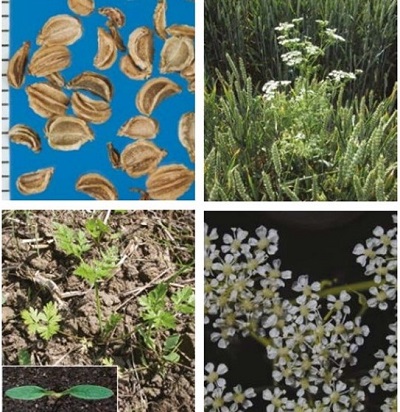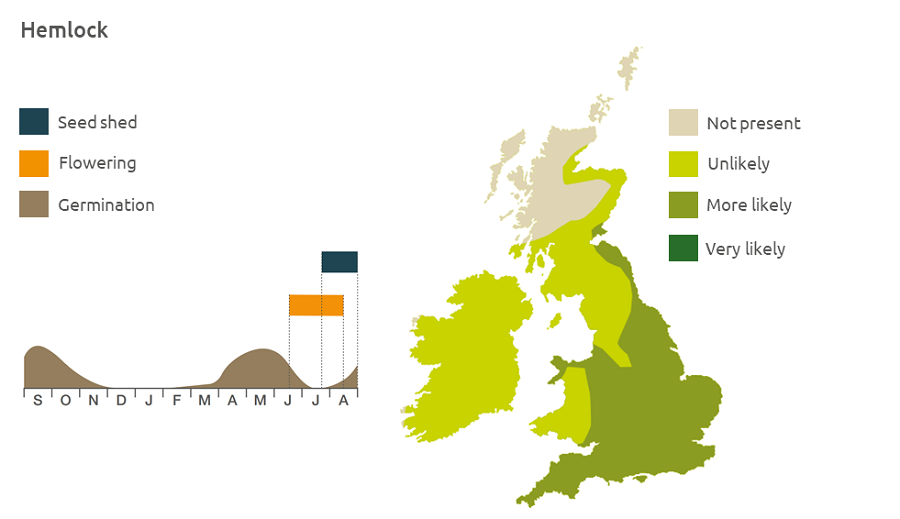- Home
- Knowledge library
- Distribution and biology of hemlock in the UK
Distribution and biology of hemlock in the UK
Hemlock is an extremely poisonous weed of perennial crops. It is very toxic to livestock. Find out how to identify and control it.
Overview
Hemlock (Conium maculatum) is most often a weed of perennial crops, as it does not persist in regularly cultivated fields. It germinates in autumn and overwinters as a rosette of divided leaves. The plants can live for one or two years.
Description
It is a biennial dicotyledon, 50–200 cm tall, ferny leaves with angular leaflets and white lacy flowerheads.
Key features
Plant: It has purple-spotted, hairless stems and an unpleasant mouse-like smell. It is extremely poisonous.

Location and life cycle

Geographic distribution
Hemlock is generally a lowland plant and usually prefers damper soils on waste tips and roadsides, and in perennial crops.
Soil type
It prefers damper, nutrient-rich soils.
Seed statistics
- Seed weight: 3.33 mg
Management
Control the plant in arable crops to prevent persistence into grass leys. The weed is very toxic to livestock. Plants should be controlled with glyphosate and all livestock should be excluded until the weed has died back completely.
For advice on herbicides, please speak with your agronomist or adviser.
When was this information last updated?
This page is based on content from the encyclopaedia of arable weeds publication. Since it was first released in 2008, the publication has been redesigned several times but not revised. However, it remains a good foundation for general information on the distribution and biology of weeds.
Learn more about the risks of hemlock weed in livestock farms

